F-86 Sabre — America’s MiG Killer
February 3rd, 2024
9 minute read
It was the most famed combat aircraft of its day, if not of the whole period in the early stages of the Cold War. Moreover, the North American F-86 Sabre was without a doubt among the most ubiquitous and most successful jet fighters — which aviation experts have noted are not attributes that always go hand-in-hand — and it quickly proved its worth under fire in the Korean War (1950-53). The Sabre was also notable for its numerous variations, which is a testament to its adaptable design.
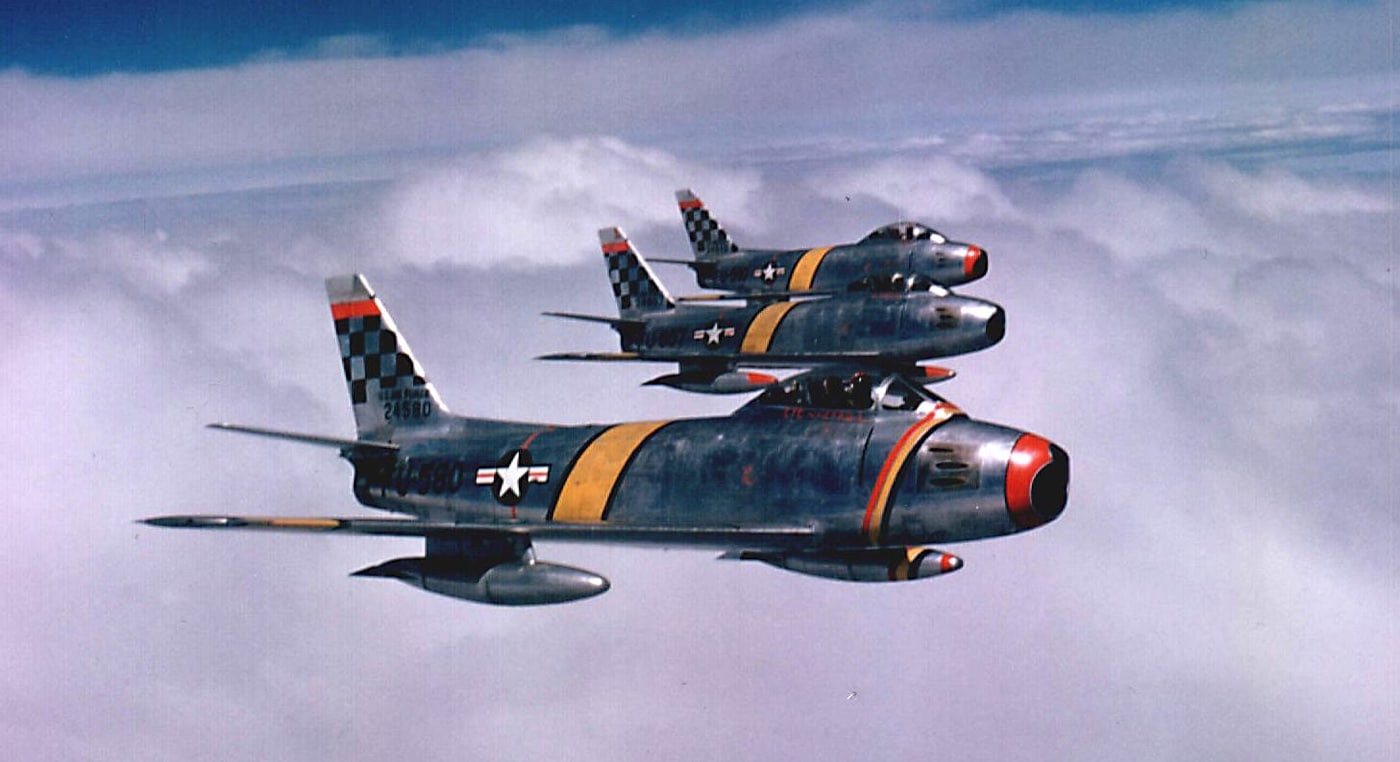
It all began when the U.S. Army and U.S. Navy sought to award a contract for the first jet fighter in 1944. Even then, as it was all but apparent it would come too late for the big show, few could have expected that it would result in such a leap forward in aviation design. The F-86 proved to be just what was needed in the first major conflict of the Cold War, and it went on to enjoy unprecedented success in a variety of combat roles — serving with a dozen different air arms around the globe for nearly 50 years.
With nearly 10,000 built, the F-86 remains among the most prolific Western jet fighters of all time.
Forging the Sabre Jet
Originally developed to meet a United States Army Air Forces specification, the design was intended to serve as a day fighter that could also be employed in secondary roles including being an escort fighter and dive bomber. It began as the North American NA-140 design, which essentially evolved from the earlier straight-wing North American FJ-1 Fury that was built for the United States Navy.
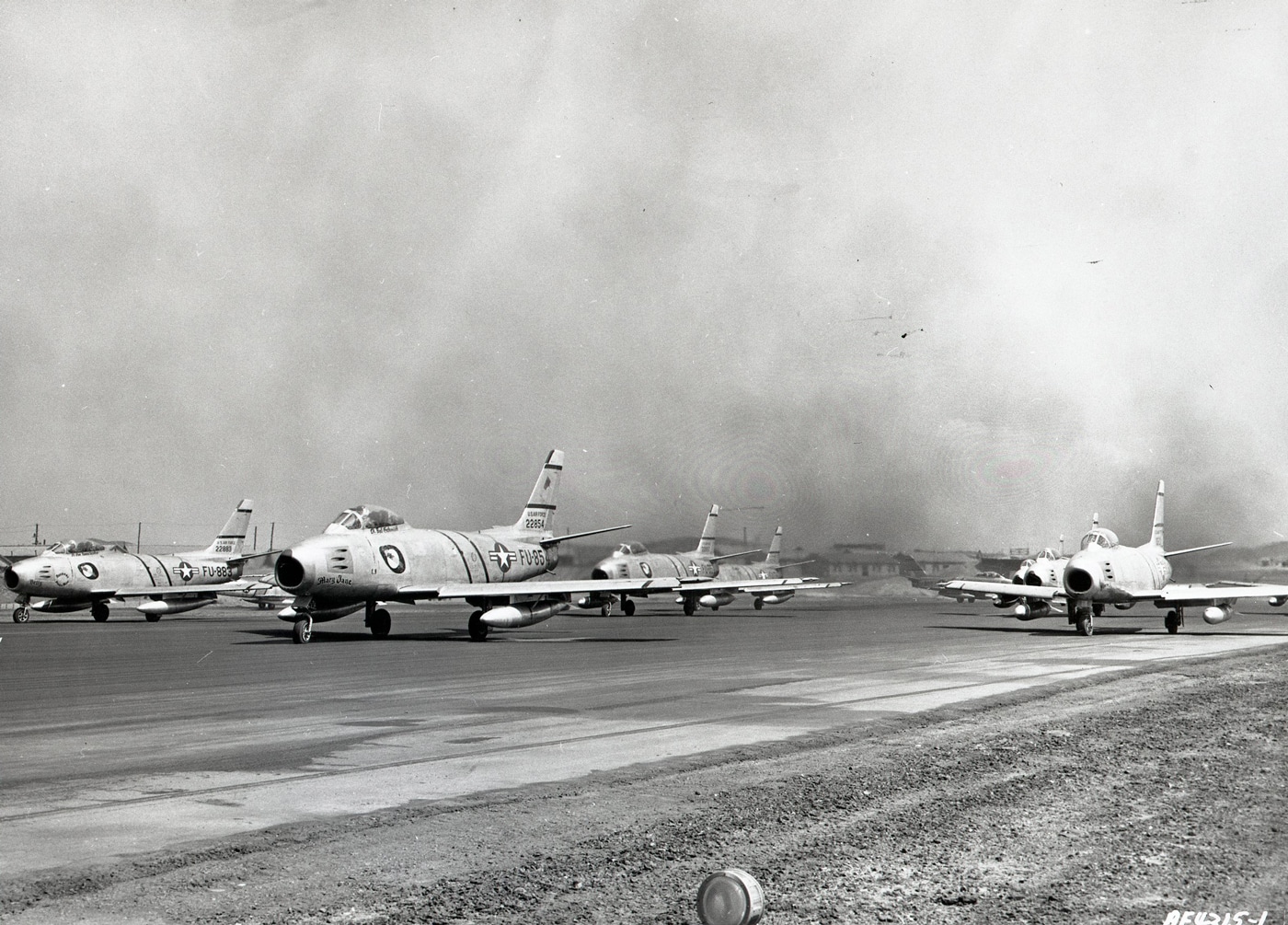
In late 1944, North American received a contract to build a pair of XP-86 prototypes, and it wasn’t exactly all that revolutionary. Fortunately, Germany was on its last legs. Though the aircraft design was too late to see service in the Second World War, the U.S. military was able to acquire valuable technical data from the defeated Nazis. For American aircraft designers, it was akin to being provided with an afterburner.
With that new insight, the aircraft’s design team forged ahead and the still-in-development aircraft was radically enhanced with the addition of a swept wing on the airframe that ensured that it would be one of the finest dogfighters of its era, while it would offer performance that far exceeded the previous generation of jet fighters.
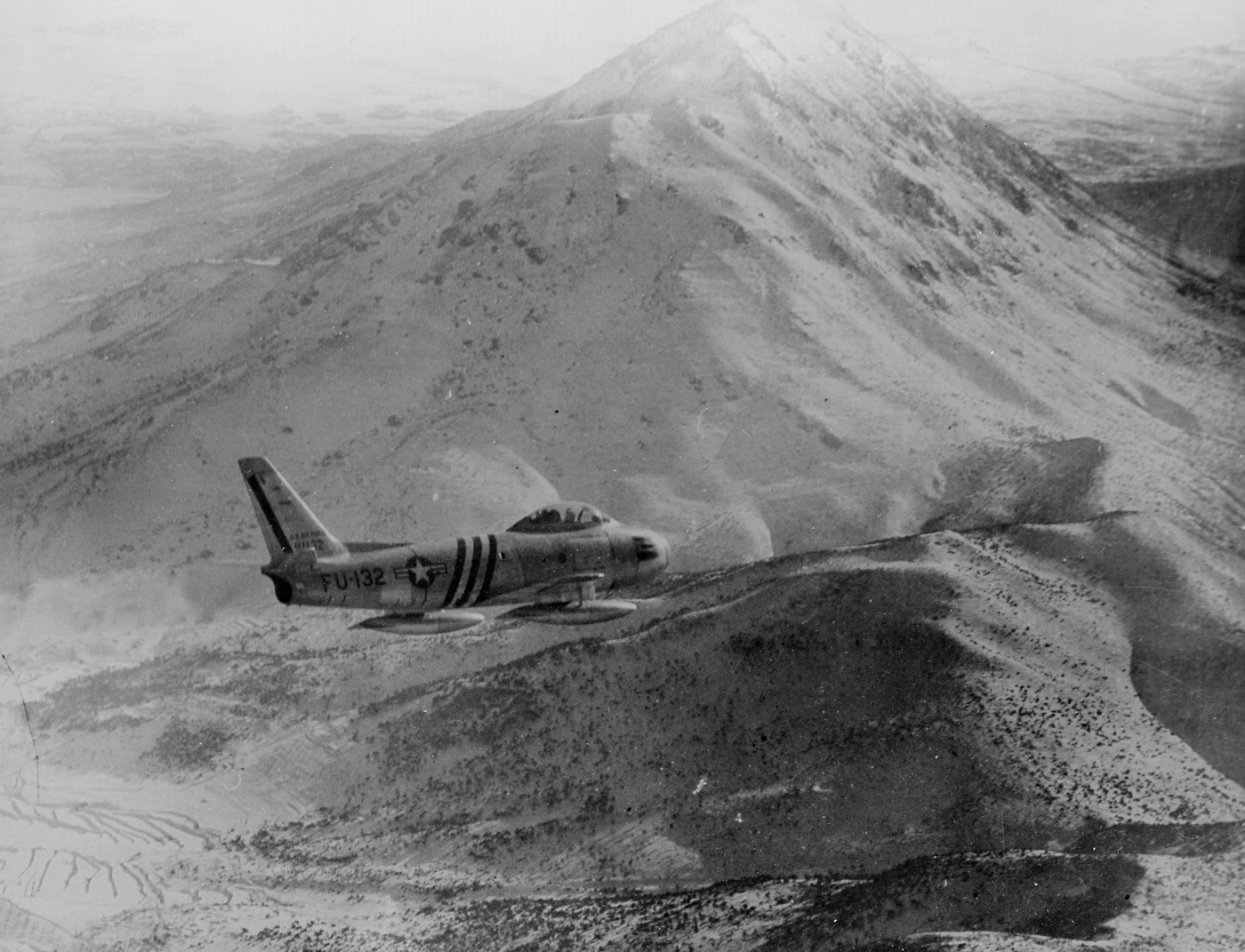
These changes were significant and did delay the program by a year, but at the time that didn’t really matter. Germany and, soon after, Japan were defeated. Though the Sabre didn’t take its maiden flight until October 1947, it was clearly proof that excellence can’t be rushed.
Enter the XP-86
The XP-86 as initially flown was powered by a General Electric TG-180 turbojet developing 16.68kN (3,750 pounds) of thrust. It was subsequently re-engined in April 1948 with a General Electric J47, becoming the YP-86A, and it proved capable of exceeding Mach 1 in a shallow dive. The significance of that fact can’t be overstated!
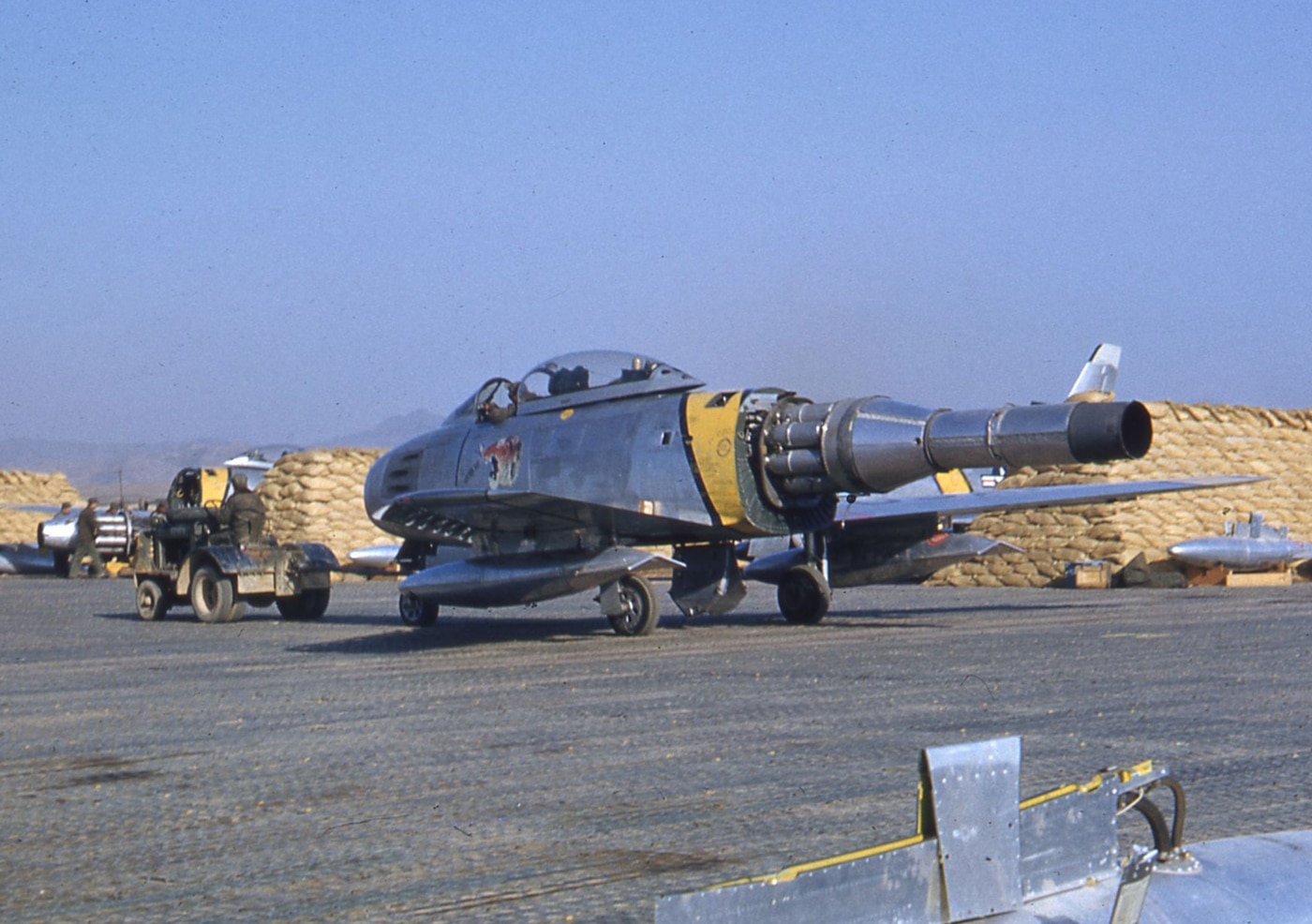
The initial production P-86A model was powered by a 21.57kN (4,850 pound) J47-GE-1. It first took to the skies in May 1948. A month later, the aircraft was redesignated the F-86A as the United States Air Force changed the designation for aircraft from P (pursuit) to F (fighter). It entered service with the 94th Fighter Squadron of the 1st Fighter Group at March Field, California, in February 1949.
Soon after the 4th and 81 Fighter Groups were operating the aircraft and it was in service with the former unit, the Sabre was dispatched to Japan in late 1950 for service in the Korean War. By that point, a total of 554 F-86As were built, and most were powered by the 23.13kN (5,200 pounds) J47-GE-3, -7, -9, or -13 turbojet.
Slicing Through MiG Alley
It would be almost impossible to discuss the air war in the skies over Korea without at least a mention of the Sabre. Although more than a dozen types of aircraft were employed in the conflict, it was the F-86 that took on the Soviet MiGs in countless duels in the sky — even if the Sabre wasn’t actually in the first aerial encounter involving jet fighters.
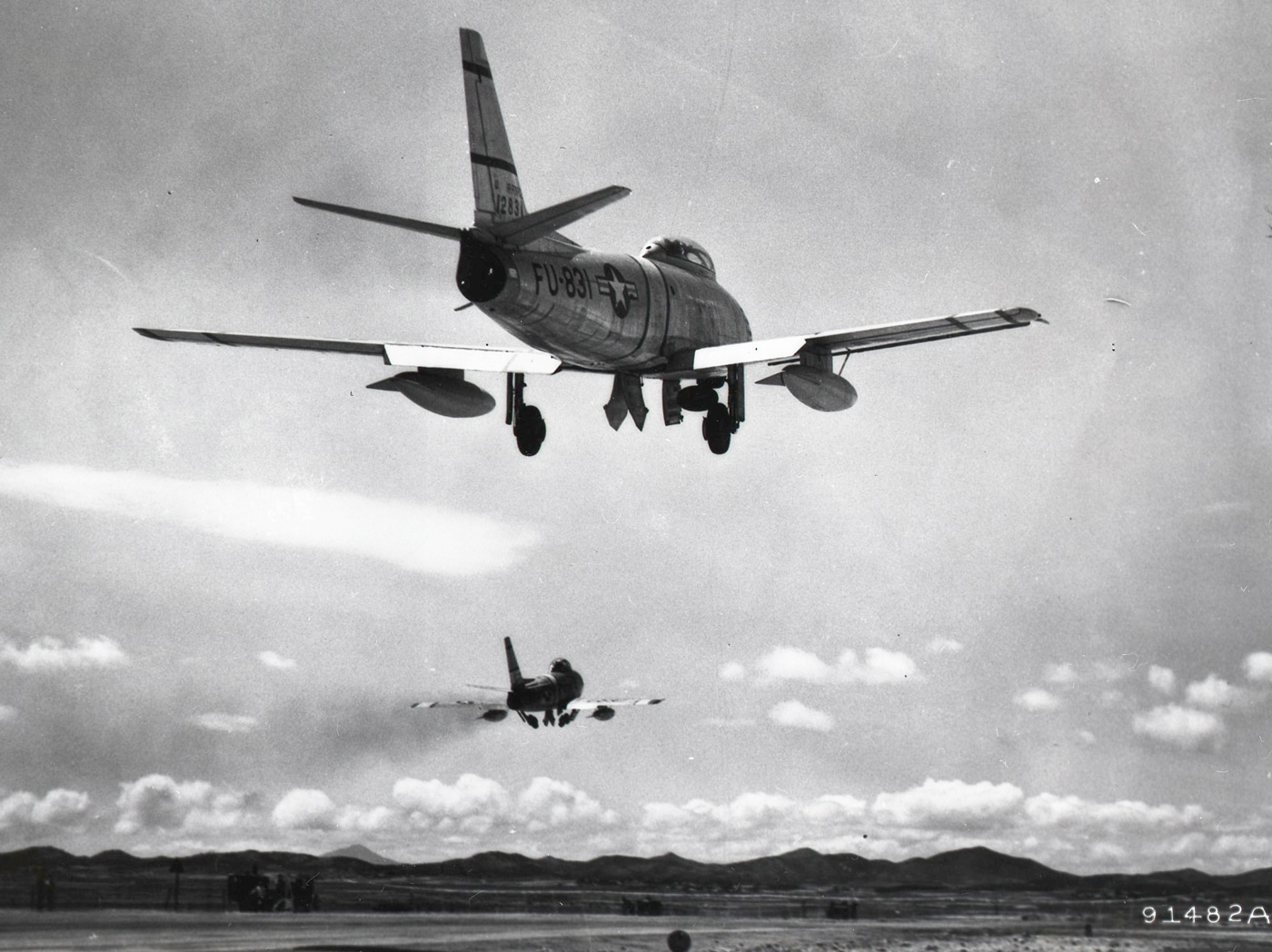
As the National Museum of the United States Air Force chronicled, the first jet-to-jet victory took place in the early stages of the war, when on November 8, 1950, Lt. Russell J. Brown, flying an F-80C, shot down a much faster MiG-15 over North Korea. Yet, it was just over a month later, on December 17, 1950, that Lt. Col. Bruce Hinton of the 4th Fighter Group became the first F-86 pilot to shoot down a MiG.
He wouldn’t be the last.
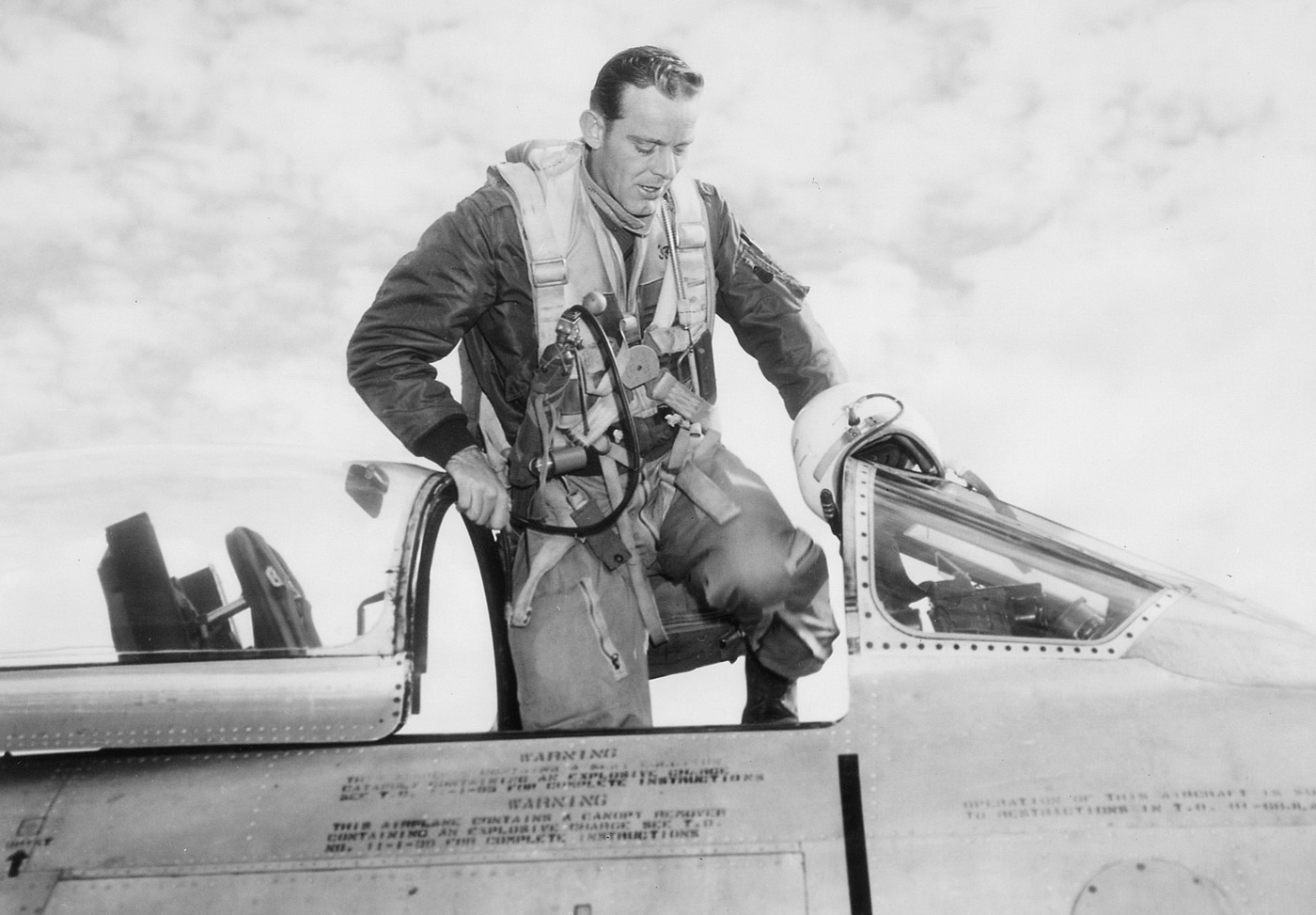
Moreover, though the Sabre didn’t draw first blood in the conflict, it went on to see numerous victories. Of the total of 41 American pilots who achieved ace status during the Korean War, all but one flew the F-86 up and down “MiG Alley” — the name United Nations (UN) pilots during the Korean War gave to the northwestern portion of North Korea.
It should be noted that U.S. propaganda does probably over-credit the jet just a bit.
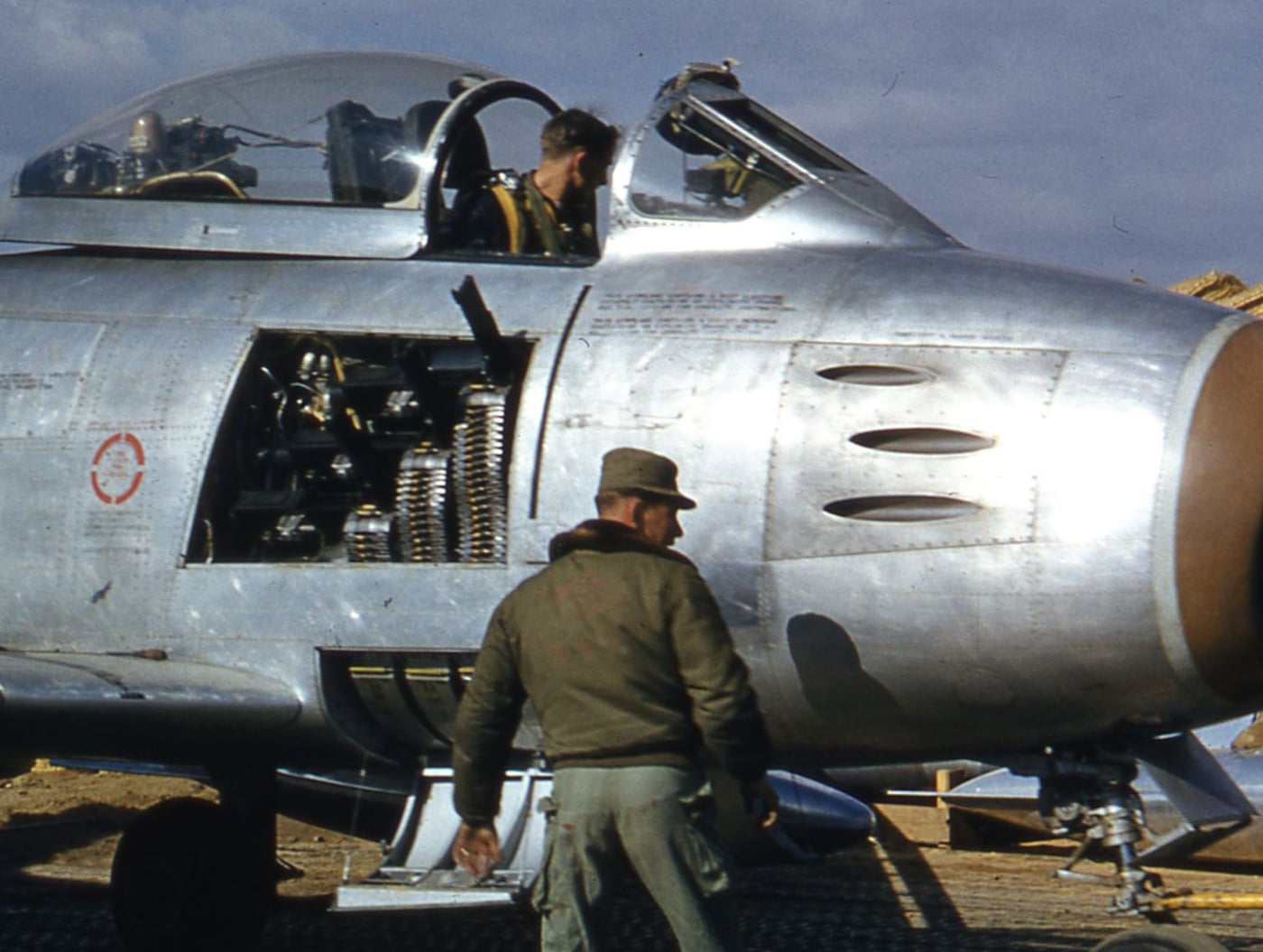
Sabres — mostly the improved F-86E, which added an all-moving tailplane, and F-86F day fighter variants — were initially credited with almost 800 MiG-15s destroyed, for a loss of only about 80 F-86s — a ratio of 10:1. That number has been cited in countless books and articles about the air war in Korea.
However, more recent research suggests the actual ratio was far closer to 2:1, still a very respectable number given the capabilities of the MiG-15. A 2022 RAND report suggested that against Soviet pilots (flying entirely as “volunteers” we should add), the U.S. kill-to-loss ratio was just 1.3:1 — but when the MiG was flown by Chinese or North Korean pilots, U.S. flyboys destroyed upwards of a dozen MiGs for every Sabre that was shot down.
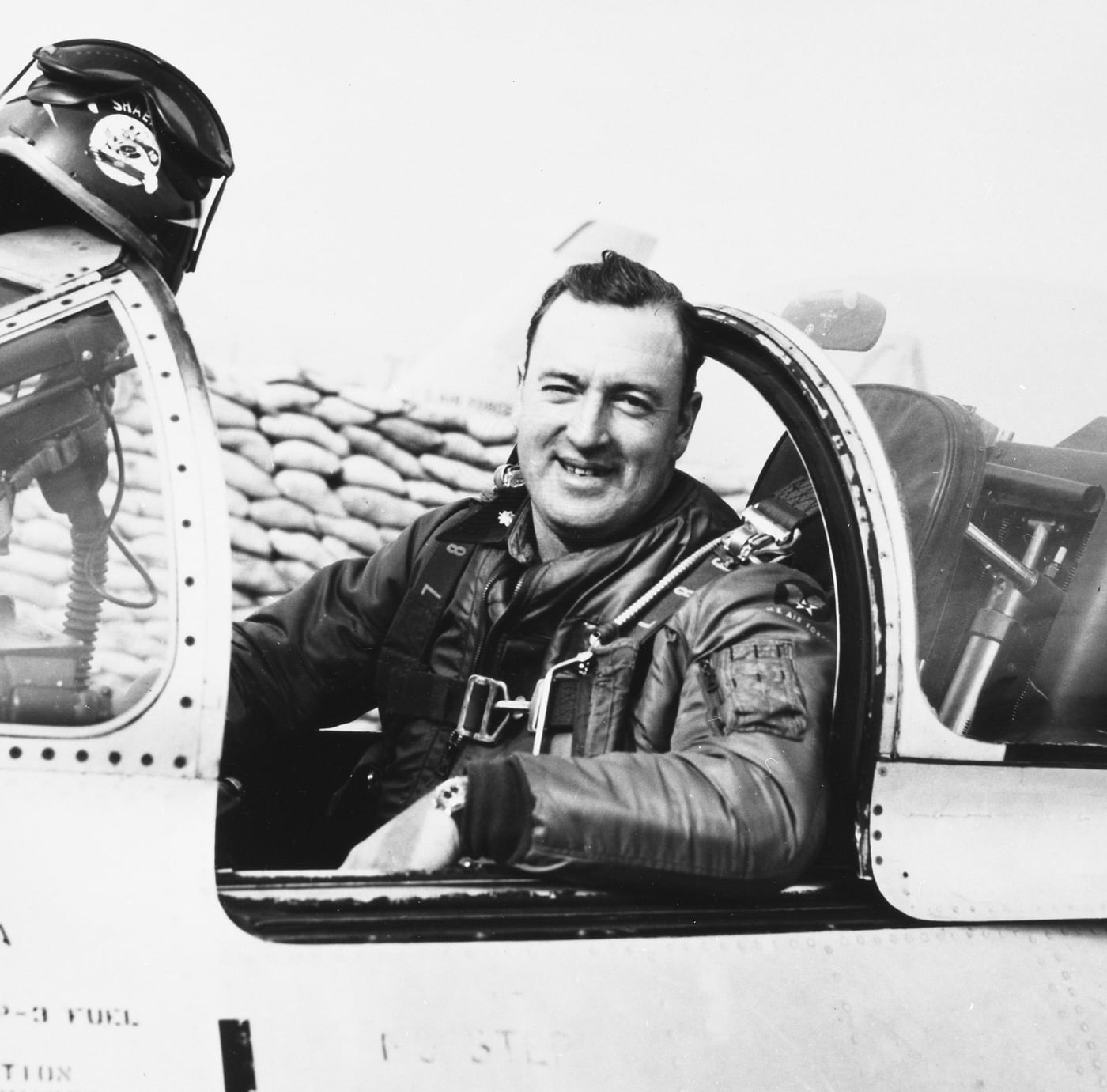
It should be added too, that no other Chinese/North Korean aircraft of the era could take on the Sabre with any degree of success.
The F-86D and F-86H
Though the day fighters remain the best known of the Sabres to have cut through the skies thanks to their service in Korea, the most numerous of the aircraft’s variants was actually the F-86D all-weather fighter that was originally intended for service with the Air Defense Command, which was to provide air defense of the Continental United States (CONUS).
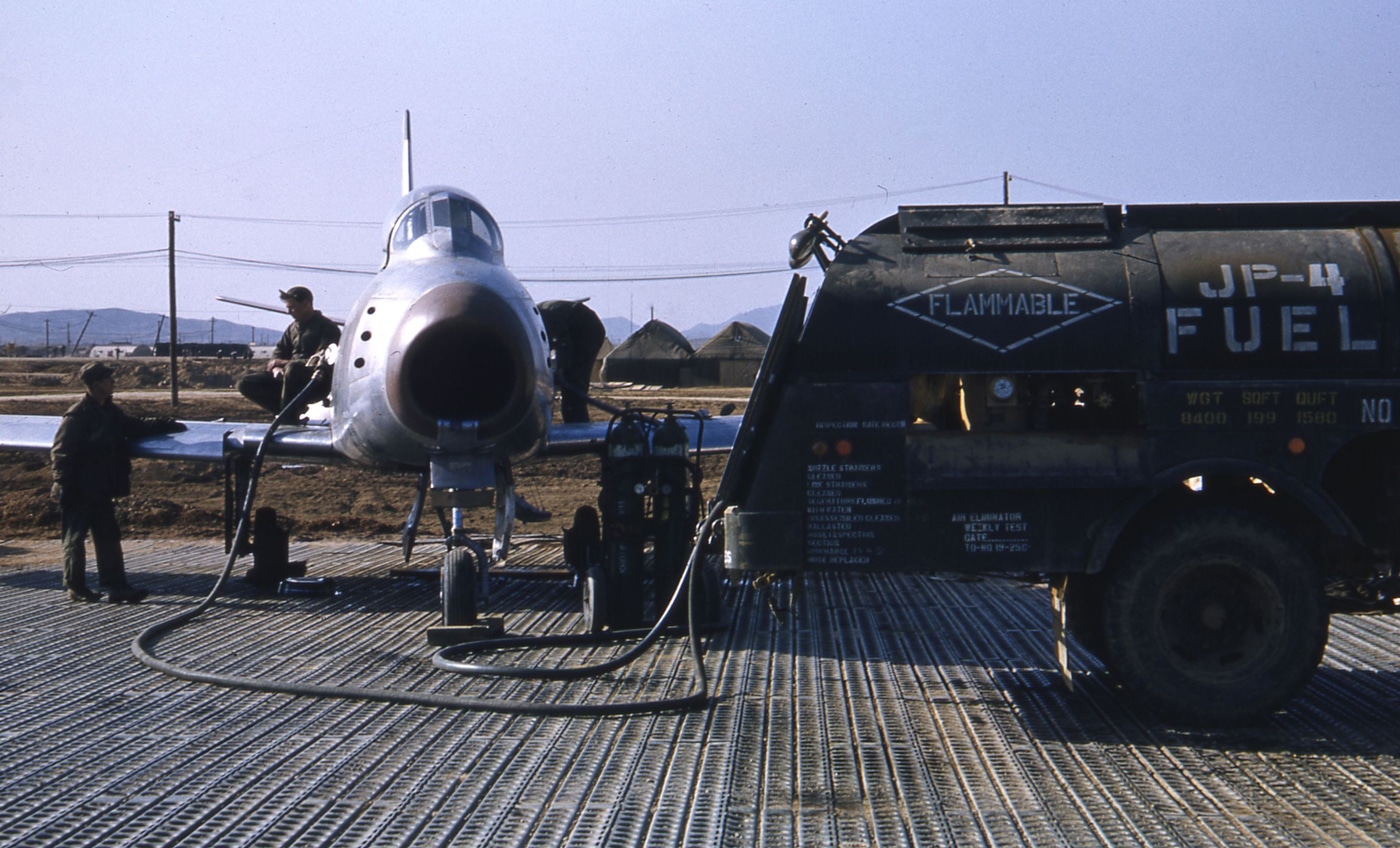
The aircraft was originally designated the F-96 due to considerable changes, including the incorporation of interception radar and fire-control system, while this model also carried twenty-seven 70mm (2.75-inch) Mighty Mouse rockets in a retractable ventral tray. A number of the F-86Ds were adapted for service with NATO allies and known as Sabre Dogs, and many were subsequently rebuilt as the F-86L, which featured an increased wing span and further updated avionics.
Another of the notable variants of the Sabre was also the last of North American’s production, the F-86H, a dedicated fighter bomber. It was equipped with the more powerful J73 engine contained within a much-redesigned fuselage that also provided additional fuel capacity and nuclear-weapon capability. The aircraft had a maximum speed of 692 mph (1,114 km/h) and a range of 591 miles (835 km). It was armed with four 20mm (0.79-inch) cannons and could carry two 500-pound (227 kg) bombs, a single 1,000-pound (454 kg) bomb, or sixteen 127mm (5-inch) rockets.
A total of 477 F-86H Sabers were produced.
Australian and Canadian Sabres
North American production ended with the F-86H, but those weren’t the final Sabres. Licensed models were also built by the Commonwealth Aircraft Corporation (CAC) in Australia and by Canadair in Canada. The former built 112 aircraft while the latter produced another 1,815.
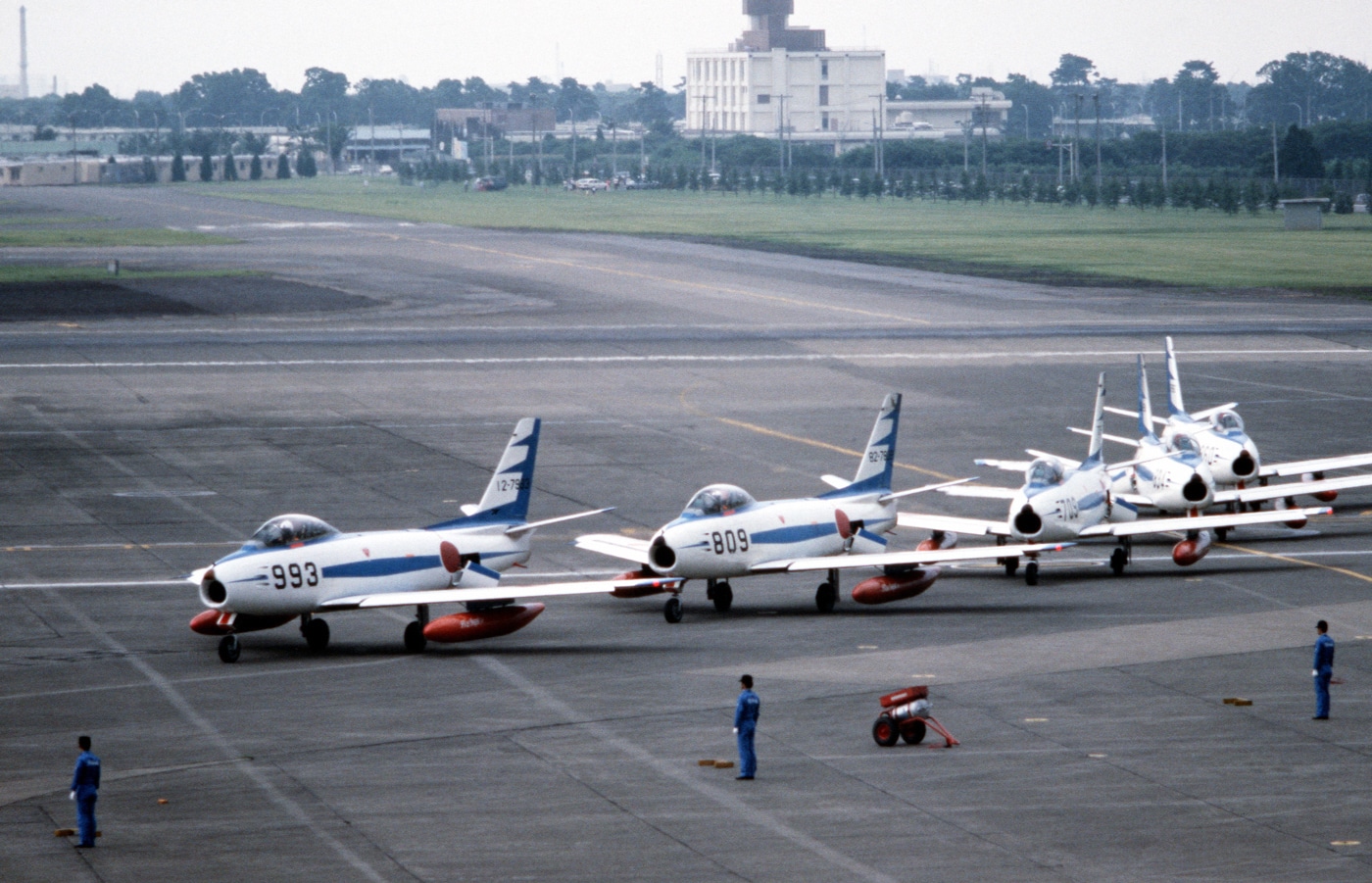
The CAC Sabre was powered by a 33.35kN (7,500 pounds) thrust Rolls-Royce Avon 26 engine, while it was armed with two 30mm (1.1-inch) cannons. Canadair, which also produced aircraft for the U.S. Air Force with the GE engines, also built 370 Sabre Mk 5s with 28.26kN (6,355 pounds) Orenda 10 Turbojets. The last of the Canadian models was the Sabre Mk 6, which was equipped with the more powerful Orenda 14 engine that provided 32.35kn (7,275 pounds) of thrust.
There were also models built under license with American-made components by Fiat in Italy and by Mitsubishi in Japan.
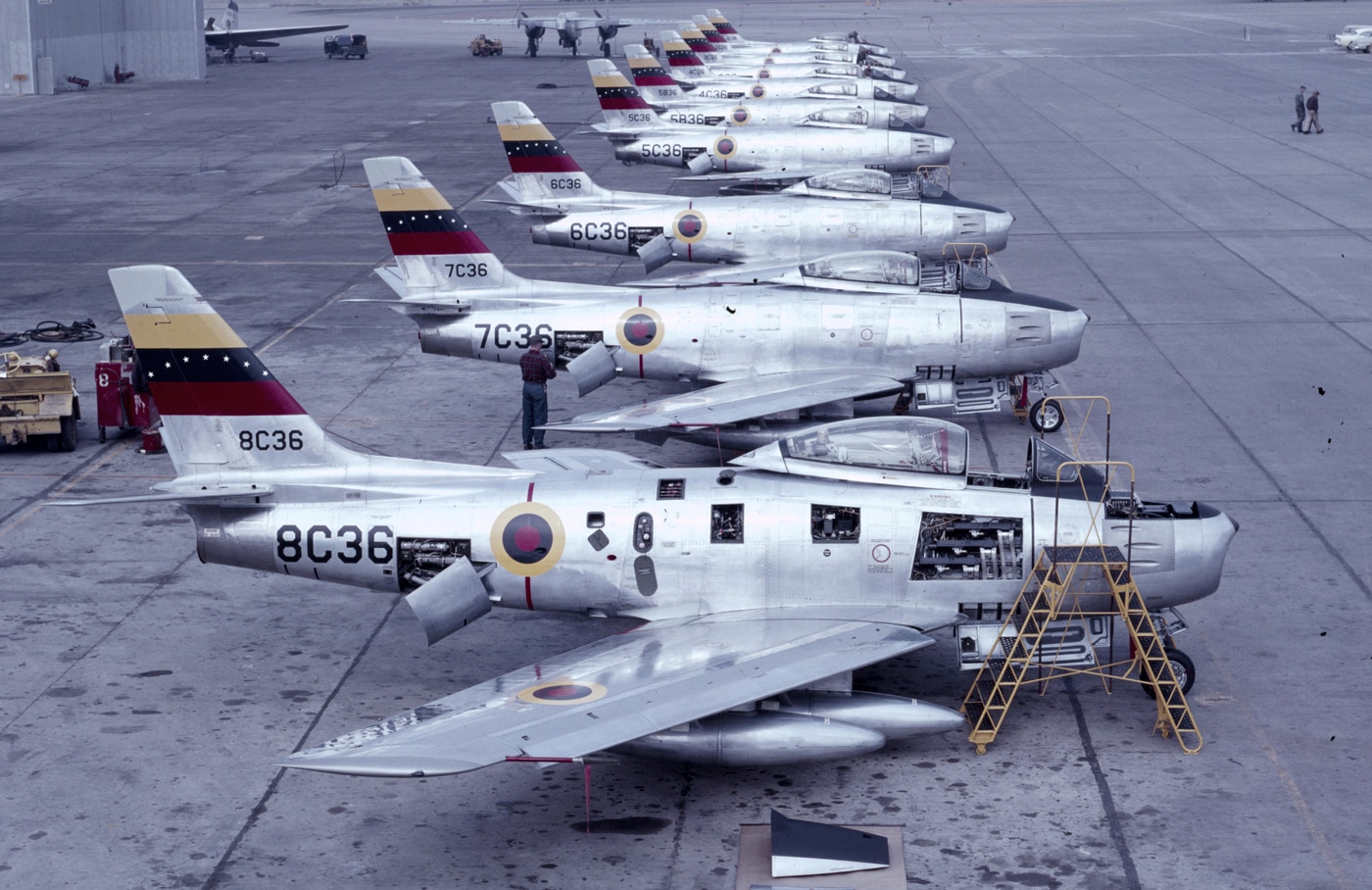
The Sabre went on to see service with more than a dozen nations around the world, including Argentina, the Republic of China (Taiwan), Greece, Italy, Norway, Pakistan, the Philippines, South Africa, Turkey, West Germany, and Yugoslavia. Bolivia was reported to be the final operator of the F-86 Sabre, finally retiring its last one only in 1994!
North American Sabre Legacy
While it is remembered for its combat role in Korea, the Sabre was employed as a test bed aircraft for the National Advisory Committee for Aeronautics (NACA), the predecessor agency to NASA (National Aeronautics and Space Administration). In the 1950s, the NACA High-Speed Flight Station flew several North American F-86 Sabres in test flights to investigate maneuvering accelerations and buffeting characteristics at high altitudes, and to research the handling qualities of swept-wing fighters.
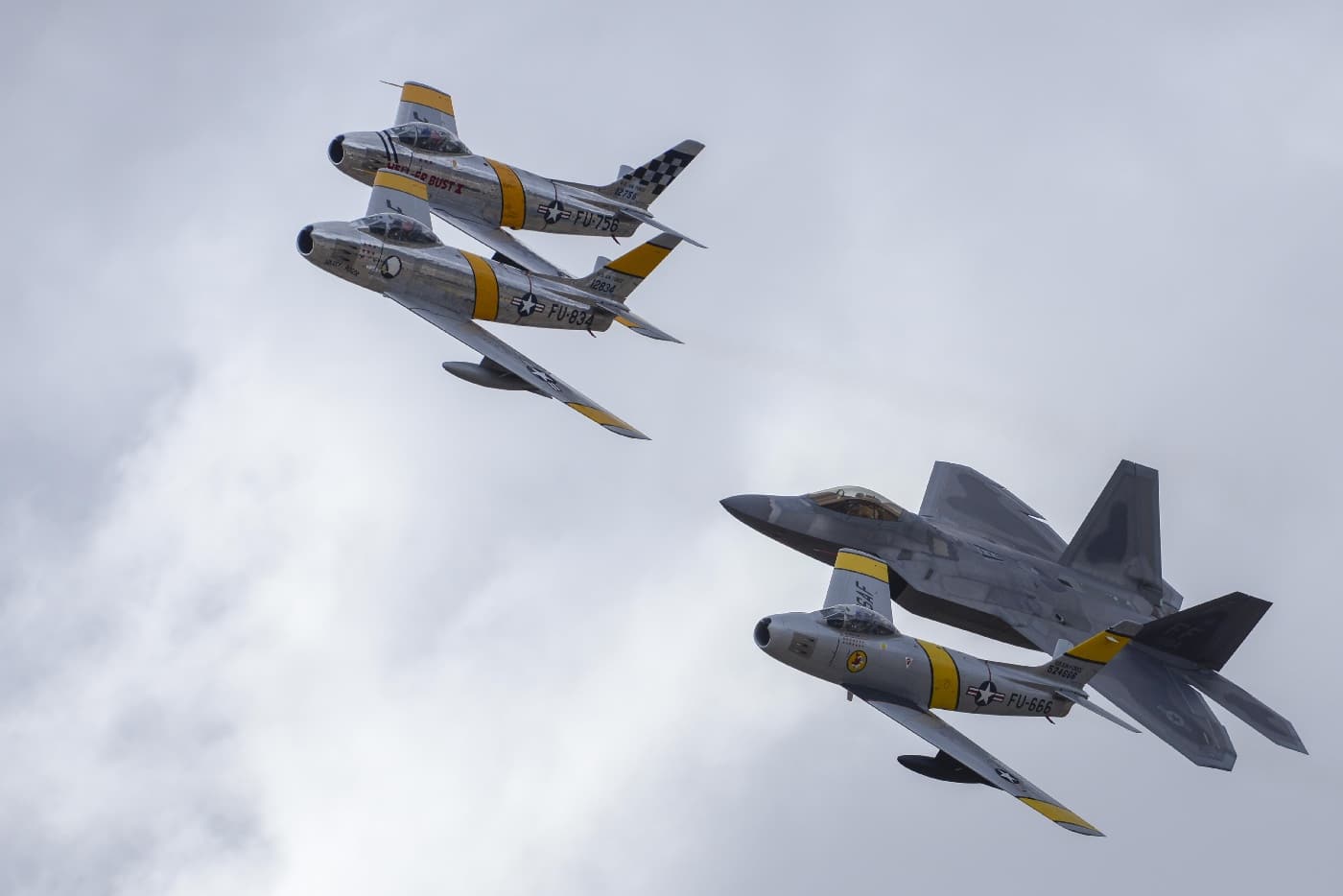
The aircraft was one that was flown by those who had the “right stuff!” Future astronauts Lt. Col. Virgil “Gus Grissom” and Major John Glenn, who was a U.S. Marine Corps exchange pilot with the U.S. Air Force, each flew the Sabres in the Korean War. Colonel Edwin “Buzz” Aldrin, who would be the second man to walk on the moon, was even credited with shooting down two MiGs in Korea.
In addition to being one of the most respected warbirds of its day, the Sabre also has the distinction of being the most-produced Western jet fighter, with a total production of all variants totaling 9,860 aircraft. Fortunately, there are approximately three dozen surviving F-86 Sabres that are still airworthy and dozens more still that are on display in museums around the world.
Editor’s Note: Be sure to check out The Armory Life Forum, where you can comment about our daily articles, as well as just talk guns and gear. Click the “Go To Forum Thread” link below to jump in!
Join the Discussion
Continue Reading
Did you enjoy this article?

 450
450






